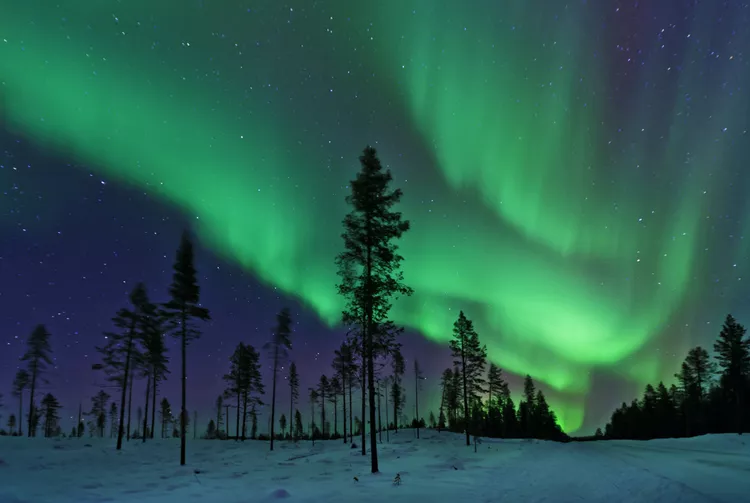1. Introduction
The Northern Lights, or Aurora Borealis, are a breathtaking natural phenomenon primarily visible in countries near the Arctic Circle. This article explores the best locations in Sweden where you can witness this spectacular light display.
2. Best Places to View the Aurora Borealis in Sweden
Abisko National Park
Located just north of Kiruna, Abisko National Park offers a prime viewing spot for the Northern Lights. With the unique microclimate created over Tornetrask Lake, known affectionately as the Blue Hole, visitors can expect outstanding aurora sightings. In addition to guided tours, adventurous travelers can enjoy backcountry camping and trekking, or head up to the Aurora Sky Station for stunning views.
How to Get There: Scandinavian Airlines (SAS) operate daily flights from Stockholm Arlanda to Kiruna. From Kiruna, take a bus to Abisko or opt for the train to STF Abisko Mountain Station, known as “Abisko Turiststation,” which is conveniently located 100 km west of Kiruna and easily accessible by car via the European route E10.
Jukkasjarvi and the Torne Valley
The village of Jukkasjarvi is famous for its yearly constructed ICEHOTEL, made from ice sourced from the Torne River. This region is also an excellent location for aurora viewing. Guided tours from the ICEHOTEL lead to Esrange Space Center, where visitors can enjoy dinner in the wild beneath the vibrant colors of the Northern Lights. The nearby Torne Valley, along with Lake Poustijarvi and surrounding villages such as Nikkaluokta and Vittangi, offer perfect conditions for witnessing the magical display. Various private companies also provide dogsledding and snowmobile excursions at night for an exceptional experience.
How to Get There: Flights from Stockholm to Kiruna are offered by SAS and Norwegian airlines. Jukkasjarvi is approximately 17 kilometers away from Kiruna and around 15 kilometers from Kiruna Airport. If you’re driving, head towards Lulea on E10 and look for signs directing you to ICEHOTEL/Jukkasjarvi.
Porjus and Laponia
Porjus, a small village with around 400 residents, is located about 60 kilometers from the Arctic Circle and within the UNESCO World Heritage site of Laponia. Surrounded by national parks such as Padeljant, Muddus, and Stora Sjofallet, Porjus enjoys clear skies, minimal light pollution, and cold temperatures that create excellent viewing conditions for the Northern Lights.
How to Get There: A flight from Kiruna to Porjus lasts approximately 11 minutes, operated by SAS Airlines. For those preferring a road trip, it takes about 2.5 hours to drive from Kiruna to Porjus.
Other Regions
Provided that the weather cooperates, the Northern Lights can be visible across subarctic and arctic Sweden. Larger towns such as Lulea, Jokkmokk, and Gallivare offer various winter activities including aurora spotting. In Lulea, visitors can venture into the nearby Brando forests away from city lights to experience a peaceful night under the Northern Lights.
For an unforgettable experience, take a snowmobile ride to the summit of Dundret in Gallivare for a private viewing of the captivating light show.
How to Get There: There are three weekly flights between Kiruna and Lulea, lasting about 23 minutes. The train journey takes approximately 3 hours and 42 minutes, while driving can take around 5 hours. SAS also offers daily flights from Kiruna to Gallivare, known as the Lapland airport, just a 10-minute drive from the city center.
Enjoy the Northern Lights
The enchanting beauty of the Northern Lights in Sweden is a truly extraordinary experience. It is essential to note that in Swedish mythology, whistling while viewing these lights is said to bring bad luck, so enjoy the spectacle quietly!
The Earth is unique in the solar system, supporting life amidst stunning beauty. Witnessing the Northern Lights, scientifically known as the Aurora Borealis, is a vivid display of nature’s artistry, caused by the interaction of charged particles with atmospheric atoms at high altitudes.





